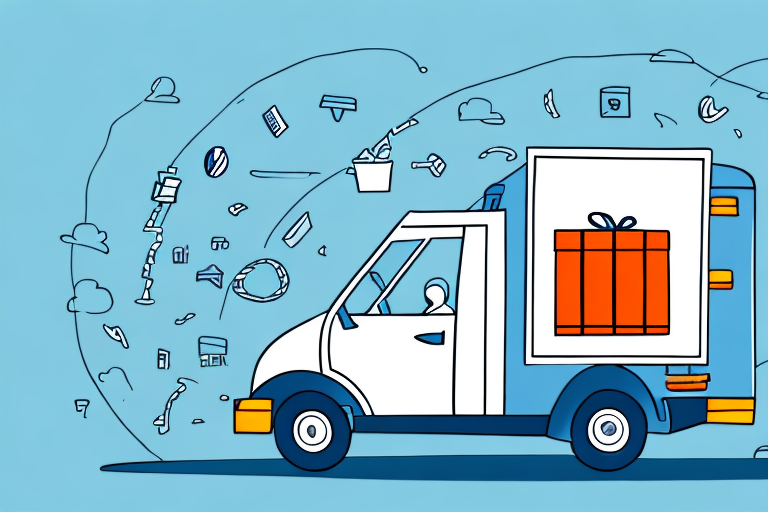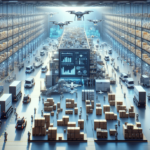Introduction to On-Demand Delivery
In today's fast-paced digital landscape, on-demand delivery has emerged as a pivotal service catering to the growing consumer demand for convenience and speed. On-demand delivery allows customers to request and receive products or services within hours or even minutes, transforming traditional business operations and consumer habits alike. This shift not only enhances customer satisfaction but also opens new revenue streams for businesses across various industries.
The Benefits of On-Demand Delivery
For Consumers
On-demand delivery offers unparalleled convenience for consumers, allowing them to receive goods and services without leaving their homes or offices. This is especially beneficial for individuals with busy schedules or those requiring specialized items. Real-time tracking features provide transparency, enabling customers to monitor their orders and plan their day accordingly.
- Convenience: Order from anywhere at any time.
- Speed: Receive items within hours or minutes.
- Variety: Access a wide range of products and services.
For Businesses
Businesses leveraging on-demand delivery can reach a broader audience and enhance customer loyalty by meeting the demand for swift and reliable service. Additionally, it allows companies to streamline their supply chain and logistics, reducing operational costs and improving efficiency.
- Increased Revenue: Tap into the growing market of instant delivery.
- Enhanced Customer Loyalty: Provide reliable and timely service.
- Operational Efficiency: Optimize supply chain and reduce costs.
Technological Advancements Driving On-Demand Delivery
Advancements in technology have been the cornerstone of the on-demand delivery boom. From GPS tracking to intelligent routing algorithms, technology enables businesses to meet consumer expectations for speed and reliability.
Real-Time Tracking and Data Analytics
Real-time tracking systems allow businesses and customers to monitor the status of deliveries, providing transparency and improving trust. Data analytics helps in optimizing delivery routes, predicting demand, and managing inventory more effectively.
- The Role of Data Analytics in On-Demand Delivery - Forbes
- Digital Transformation in Delivery Services - McKinsey
Challenges and Solutions in On-Demand Delivery
While on-demand delivery offers numerous advantages, it also presents challenges such as last-mile delivery efficiency, cost management, and maintaining service quality. Addressing these issues is crucial for the sustainable growth of on-demand delivery services.
Last-Mile Delivery
The final leg of the delivery process, known as last-mile delivery, is often the most complex and costly. Solutions include utilizing alternative delivery methods like bike couriers, drones, or autonomous vehicles to navigate congested areas and reduce delivery times.
- Innovations in Last-Mile Delivery - ScienceDirect
Cost Management
Managing costs in on-demand delivery involves optimizing delivery routes, leveraging economies of scale, and utilizing automated systems for order processing and inventory management. Implementing efficient logistics strategies can significantly reduce operational expenses.
Future Trends in On-Demand Delivery
The on-demand delivery sector is poised for continued growth, driven by emerging technologies and evolving consumer preferences. Key trends to watch include the integration of artificial intelligence, the rise of sustainable delivery practices, and the expansion into new industry verticals.
Artificial Intelligence and Automation
AI and automation are set to revolutionize on-demand delivery by enhancing route optimization, predictive analytics, and autonomous delivery vehicles, thereby increasing efficiency and reducing human error.
Sustainable Delivery Practices
With increasing awareness of environmental impacts, there's a growing emphasis on sustainable delivery solutions. This includes the use of electric vehicles, bicycle couriers, and eco-friendly packaging to minimize carbon footprints.
Best Practices for Optimizing On-Demand Delivery Services
To maximize the benefits of on-demand delivery, businesses should implement best practices such as investing in robust technology infrastructure, maintaining clear communication channels with customers, and continuously analyzing performance data to identify areas for improvement.
Investing in Technology
Implementing advanced technologies like AI-driven route planning, real-time tracking, and automated customer service can enhance operational efficiency and improve the overall customer experience.
Enhancing Customer Communication
Maintaining transparent and timely communication with customers through notifications and updates fosters trust and satisfaction, leading to higher retention rates.
- Improving Customer Communication in Logistics - Harvard Business Review
Conclusion
On-demand delivery has fundamentally transformed the way consumers receive goods and services, offering unprecedented convenience and flexibility. Businesses that effectively leverage this model can achieve significant competitive advantages through enhanced customer satisfaction, operational efficiency, and expanded market reach. As technology continues to evolve, the on-demand delivery landscape will undoubtedly witness further innovations, cementing its role as a critical component of modern commerce.




















